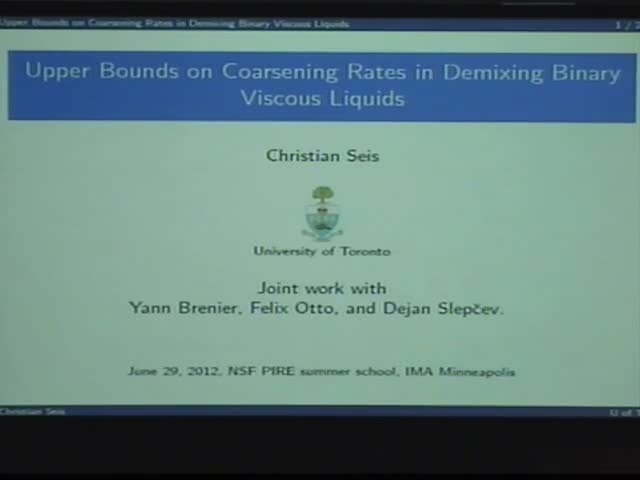(Theme 4) Upper bounds on coarsening rates in demixing binary viscous liquids
Presenter
June 29, 2012
Keywords:
- Liquids
MSC:
- 82D15
Abstract
Coarsening dynamics are gradient flow dynamics. This means, the evolution of an out-of-equilibrium system towards relaxation follows the steepest descent in an energy landscape. In many two-phase systems, the energy is proportional to the area of the interfacial layer between these phases. Therefore, descent in an energy landscape corresponds to reduction of the interface --- the pattern formed by the two phases "coarsens".
We consider the demixing process of a binary mixture of two viscous liquids as an example of such coarsening dynamics. Here, diffusion and convection are two possible transport mechanisms. It turns out, that each mechanism becomes relevant at a different stage of the evolution, which gives rise to two different coarsening rates. Using a method proposed by R. V. Kohn and F. Otto, we investigate the crossover between these rates in terms of (time averaged) upper bounds. Our analysis makes use of a Monge--Kantorowicz distance with linear/logarithmic cost as a proxy for the intrinsic distance, which is not known explicitly. This is joint work with Y. Brenier, F. Otto, and D. Slepcev.
